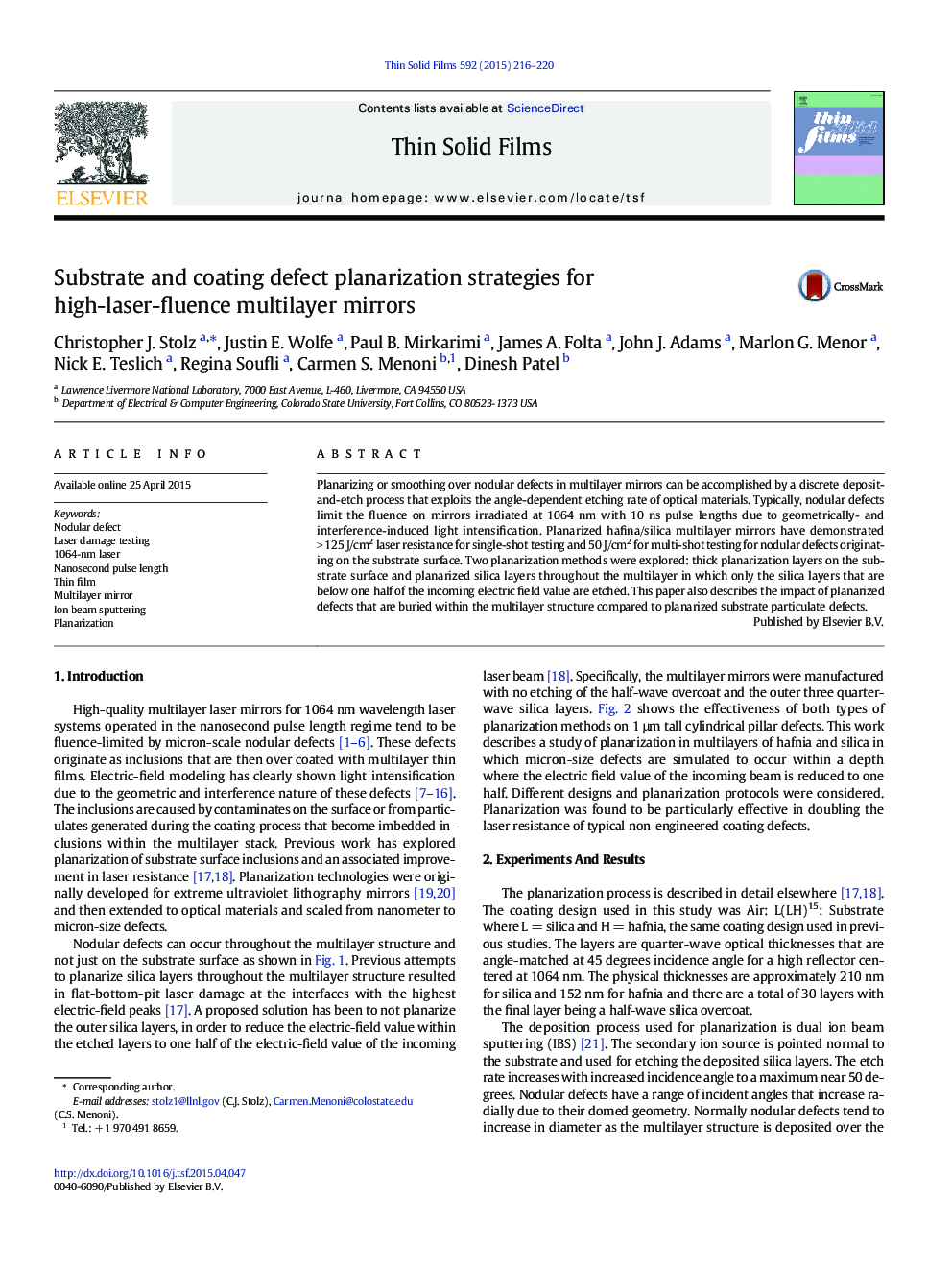| Article ID | Journal | Published Year | Pages | File Type |
|---|---|---|---|---|
| 1664543 | Thin Solid Films | 2015 | 5 Pages |
Abstract
Planarizing or smoothing over nodular defects in multilayer mirrors can be accomplished by a discrete deposit-and-etch process that exploits the angle-dependent etching rate of optical materials. Typically, nodular defects limit the fluence on mirrors irradiated at 1064Â nm with 10Â ns pulse lengths due to geometrically- and interference-induced light intensification. Planarized hafina/silica multilayer mirrors have demonstrated >Â 125Â J/cm2 laser resistance for single-shot testing and 50Â J/cm2 for multi-shot testing for nodular defects originating on the substrate surface. Two planarization methods were explored: thick planarization layers on the substrate surface and planarized silica layers throughout the multilayer in which only the silica layers that are below one half of the incoming electric field value are etched. This paper also describes the impact of planarized defects that are buried within the multilayer structure compared to planarized substrate particulate defects.
Related Topics
Physical Sciences and Engineering
Materials Science
Nanotechnology
Authors
Christopher J. Stolz, Justin E. Wolfe, Paul B. Mirkarimi, James A. Folta, John J. Adams, Marlon G. Menor, Nick E. Teslich, Regina Soufli, Carmen S. Menoni, Dinesh Patel,
